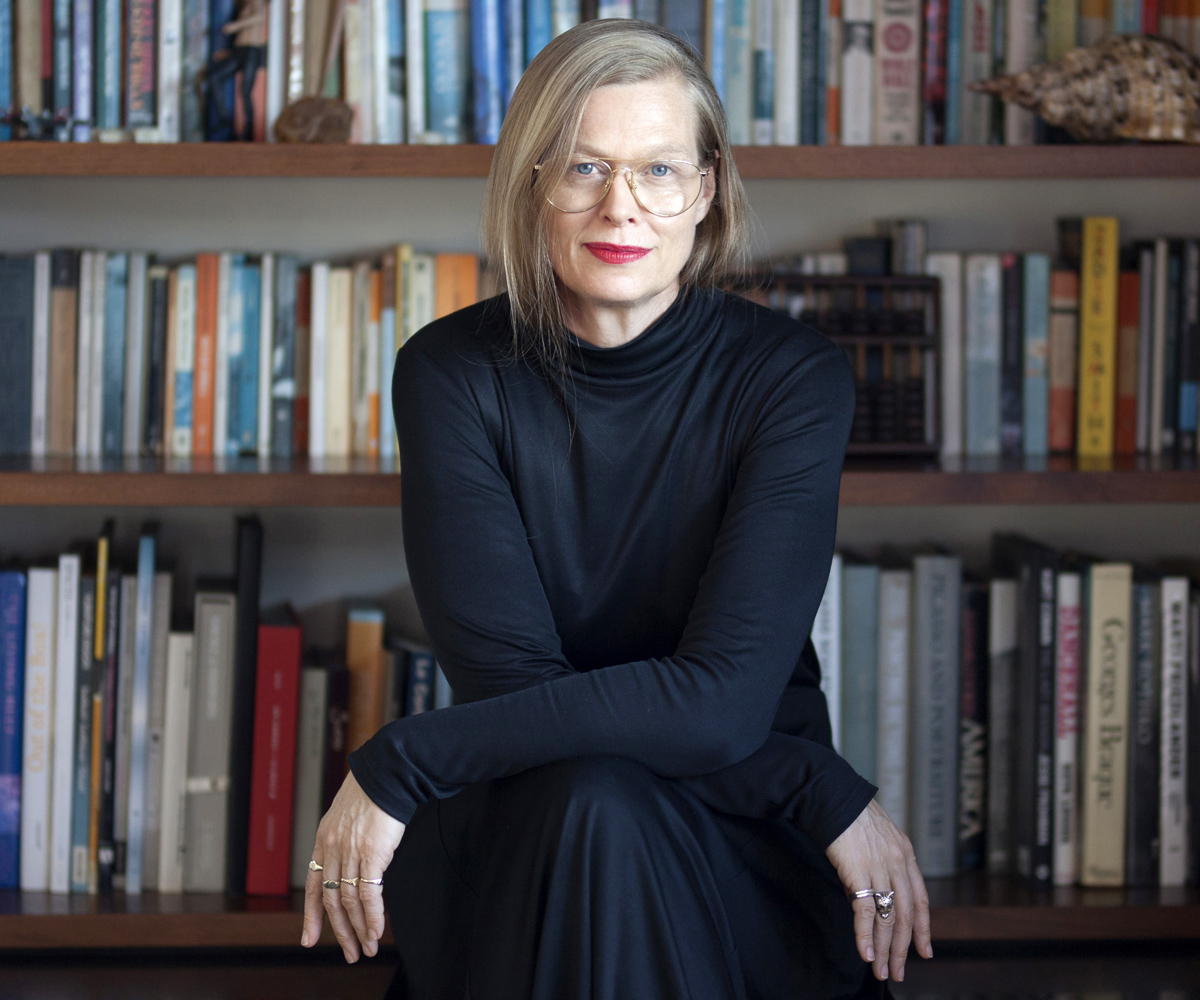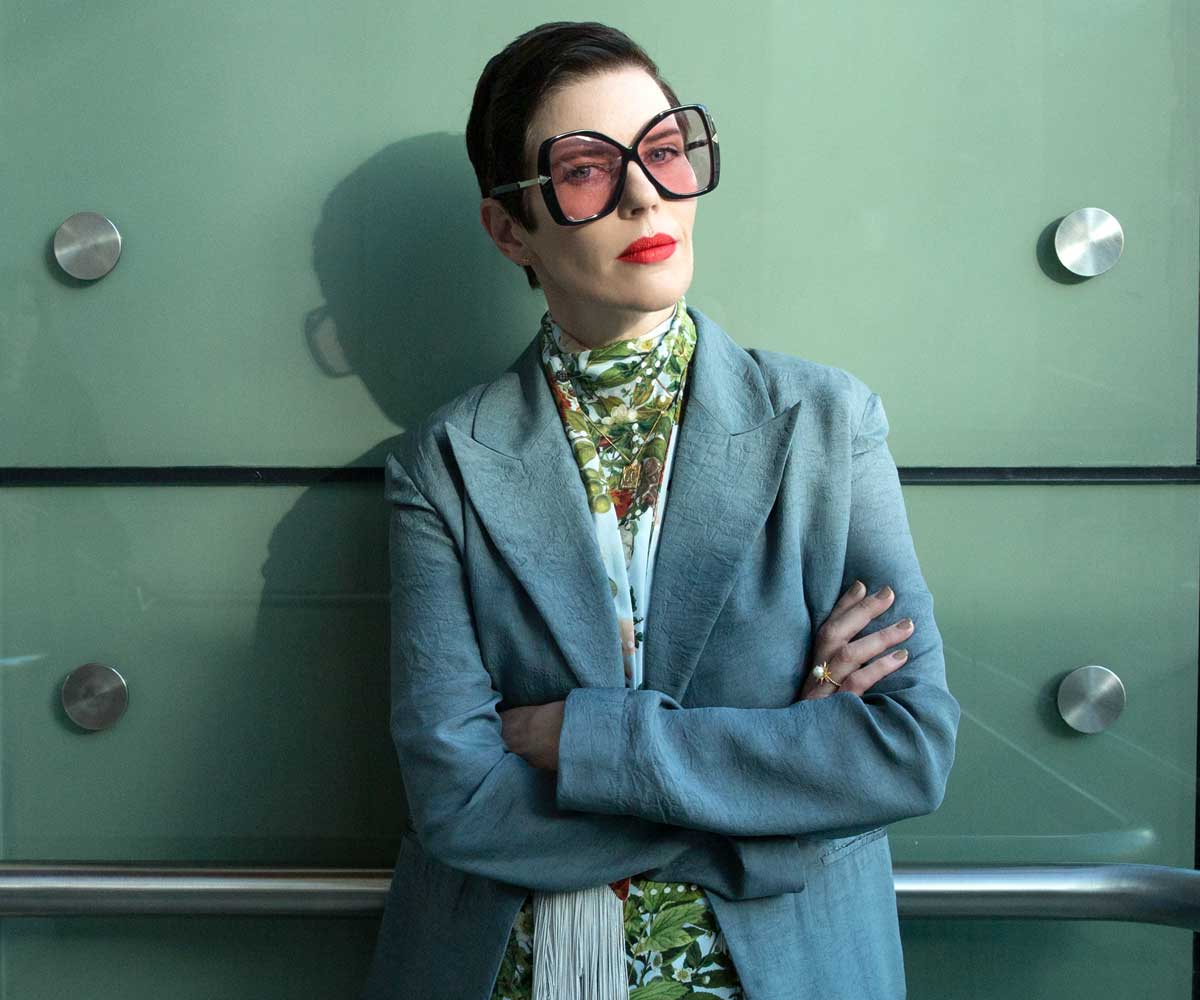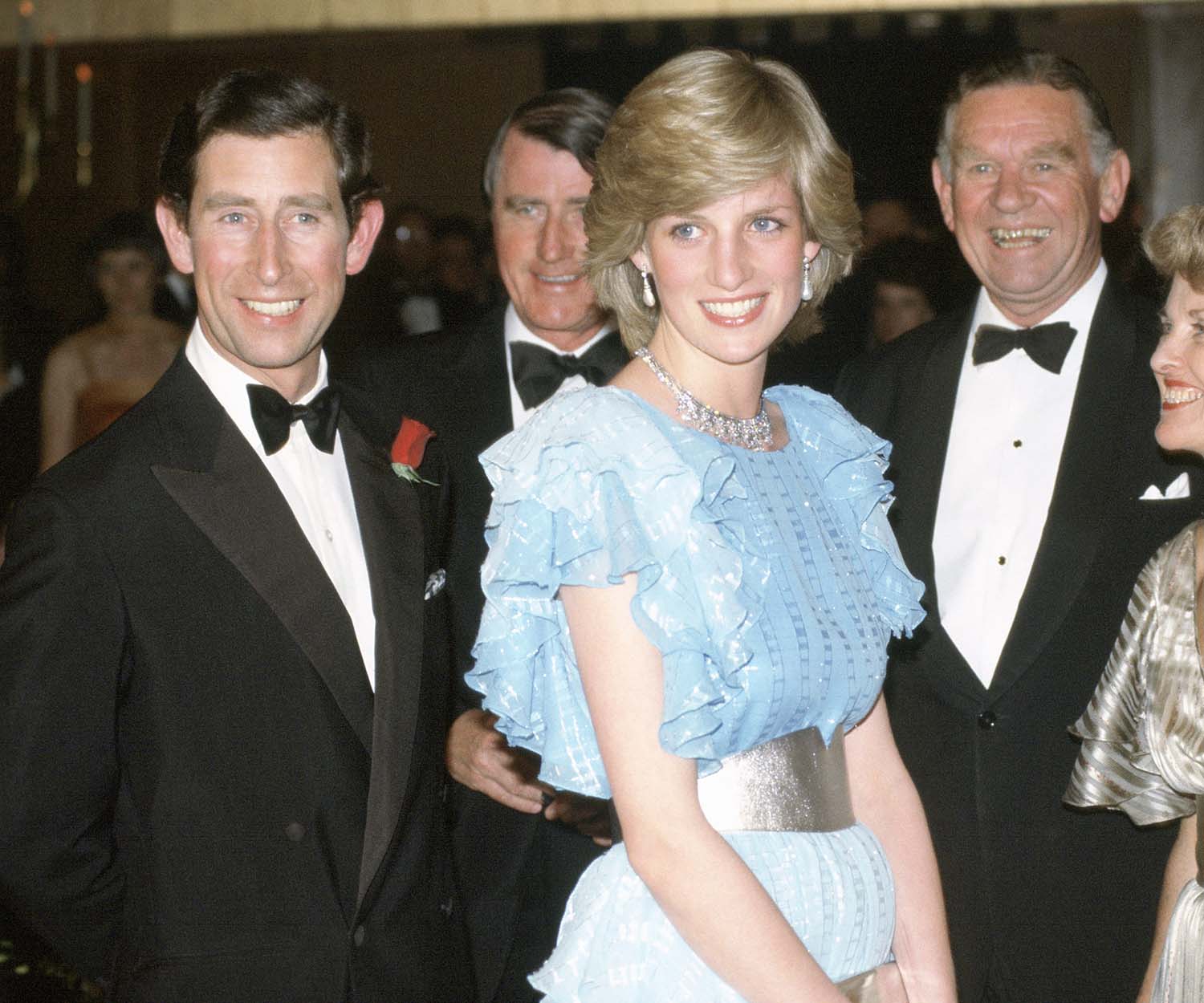Kate Sylvester was a teenager when she realised she wanted to leave school and design clothes.
Her mother’s response was telling. “Oh that’s all right… I’d have worried if you’d wanted to be an accountant.”
“Mum has always been incredibly supportive of me. When I was at school, I began chopping up sneakers and putting beads on them. She would drive me up to Orewa [north of Auckland] to sell them on the roadside over summer.”
No surprises then, that Kate’s mother Toni was a creative person – a lover of the outdoors, a passionate gardener, a former teacher and stay-at-home mum.
Kate credits her parents (pictured below) with being hugely influential in her life.
Her father, Ron, was a teacher and loved the outdoors. A dedicated tramper and climber, he passed that passion to his daughter. Kate and her family are working their way through the country’s Great Walks.
“I had an incredible childhood. We had so much freedom.”
Kate and her older brother Todd and two sisters, Holly and Joanna, grew up on Auckland’s North Shore, in Greenhithe. Her parents bought a rundown house on a couple of acres there in the ’70s.
“It had a beautiful peach orchard. The grass was over our heads on the back lawn, it was like a bombsite, covered in rubbish.”
It became a massive project.
“Mum was obsessed with the garden and Dad worked alongside her. They were always working on grand projects and I grew up thinking that’s what you do in life, you make things and have projects.”
Toni loved roses. She would take the family on road trips around derelict houses and graveyards, looking for cuttings of old roses.
“It was wild,” Kate smiles,
“She’d take those cuttings whether she’d asked for permission or not.”
It was on one such road trip that she found Kate her first memorable dress. It came from a second-hand shop. Toni remade it, embroidering over its print and turning it into a smock for her daughter.
Kate loved that dress. And she loves roses. They often feature in her collections.
In fact this year’s is built around the ‘Mutabilis’ rose, a favourite of her mother’s. This latest collection is also inspired by her parents’ love affair.
Ron and Toni were very close, and Kate discovered a box full of love letters the pair had sent to each other during their courtship, while Ron was serving with the territorials.
“They must have written nearly every day. They are so romantic.”

Kate parents Ron and Toni.
Kate’s beloved dad died just before Christmas.
His handsome face looks out from a large photo, taken on his university graduation, which sits in pride of place in Kate’s living room.
The sadness of his loss is still raw.
Kate grew up close to her brother and sisters.
Todd, the eldest, was often away playing sport, but Kate would play endlessly with Holly and Joanna. They are all two or three years apart.
Greenhithe was pretty much in the country in Kate’s childhood. “We didn’t go to many after-school activities, so we had a lot of free time to be creative.
Dress-ups were a favourite.
“We’d have lots of competitions to see who could dress up as the best old bag, or who could come up with the best ball outfit or wedding dress. I remember that freedom was really crucial… that was the thing about our house, we were allowed to do pretty much anything. Jump on Mum and Dad’s bed, play in their room. We had a playhouse we could sleep out in.
Kate’s passion for clothes grew.
“As a teenager I would go and literally stroke the clothes at Cachet, in Takapuna [the forerunner to Zambesi]. Neville [Findlay, co-founder of Zambesi] would be in there… he’d be so tolerant of us school kids.”
It was Toni who taught her daughter to sew. And it was Toni who embraced her daughter’s ambition to leave school and sell her own clothes.
“I left school in the sixth form and spent the next year making and selling clothes in the Cook Street Market.”
She made Japanese-inspired pinafores.
“I hadn’t learnt pattern-making, so they were really simple… two rectangles with straps.”
They sold well. Kate soon made enough to fund her two-year fashion design course at what was then Wellington Polytechnic.
Kate met her husband Wayne Conway at a party in Wellington in the ’80s.
“I’d finished the fashion course and was running a stall with friends at the Wakefield Street Market, selling my clothes and he was in his last year of graphic design. I took one look at him and I just knew he was going to be huge in my life. It really was love at first sight.
“We moved in together a few months later. I think his parents were a bit concerned. They came from Whakatane. I think they probably thought ‘What’s he doing with this city slicker?'”
The city slicker and the country boy went on to become inseparable.
Wayne brought his skills to bear on the market stall, coming up with labels for the clothes and shooting promotional photos. He’s been Kate’s business partner ever since and key to developing her brand.
It was Wayne who convinced her to use her own name for the business, reasoning all the big fashion houses of Europe did the same – Armani, Chanel, Gucci.
The pair would spend the next five years travelling in Europe.
“I did horrible jobs. I waitressed, I was a very bad nanny and I took a job at Liberty London [a high-end fashion store]. I thought it would be wonderful, but it was soul-destroying. The hours were insane, the pay was bad and there was only one staff phone. You had to queue all your lunch hour to use it.”
Such were the joys of the great Kiwi OE.
But the pair eventually managed to score jobs that would add immeasurably to their skills. Wayne in graphic design and Kate with British designer, Arabella Pollen, a friend of Princess Diana’s, whose clients included Margaux Hemingway and Marianne Faithfull.
Pollen specialised in beautifully tailored clothes.
“I tricked my way in as a sample machinist, having not really had any experience and I learnt so much about tailoring and working with amazing fabrics.”

By the time Kate reached Paris she was an experienced sample machinist and found herself in high demand.
French designer Corinne Cobson snapped her up. Cobson was acclaimed for her edgy rock ‘n’ roll-inspired look.
She often used menswear silhouettes and was renowned for unexpected pairings of materials like leather and silk and her layering of oversized coats and tops.
Eventually Cobson’s pattern-maker left to have a baby and Kate took her place. She soaked up the experience and those influences remain with her today.
But living in Paris was beginning to take its toll on the young Kiwi couple.
“Paris is an uptight, un-green city,” Kate explains.
“We were craving to come home, being able to walk on grass and in the bush. If you live in Paris, every Kiwi on their OE turns up to sleep on your floor. They were all full of creative energy. It seemed like exciting things were happening at home.”
Kate and Wayne returned to Auckland and created their own bit of excitement with their first store in the city’s High Street fashion district. They called it Sister.
Kate designed and sewed the entire range. While they achieved a measure of success, it wasn’t until Wayne designed a T-shirt with the words “Sister… you know you want it” that the brand really took off.
Sister was forced to close in ’98 after a legal stoush with an Australian firm with a similar name and it was then that Kate Sylvester arose like the proverbial phoenix from Sister’s ashes.

Kate and husband Wayne Conway.
Success at successive Fashion Weeks in New Zealand and Australia led to lucrative contracts with David Jones in Australia and New York’s famed Barneys and Bergdorf Goodman department stores.
“The key thing about those international contracts was that they were hugely important to our confidence. Before that we were ‘that funny little designer from New Zealand’. Being picked up by the likes of Barneys gave me a sense that I have a unique contribution to make.”
Kate’s designs have been variously described as sophisticated, feminine, irreverent, eccentric and beautiful. Modern, yet timeless.
“New Zealanders are practical people,” she explains.
“They want something easy and effortless to wear. They don’t like getting trussed up.”
Not long after that international success, babies came along and US markets went on the back-burner.
“It was a crazy time. I imagined we’d have one kid and he could come to work with us. Suddenly reality was completely and utterly different. We had twin boys and then a year later another son.”
“I took six months off completely and then returned to part-time work through their primary school years.”
Like her parents before her, Kate’s focus switched to family.
“It’s incredibly important to find that work-life balance. I wanted to give my boys the same degree of freedom I had, and for them to have their parents around.”
The family live in a renovated brick and tile home overlooking the mangroves in Auckland’s Westmere. You get the feeling the boys would have enjoyed the same freedoms their mother had growing up surrounded by nature.
The twins are now 19. Ike is studying graphic design in Wellington and Tom has just completed a gap year, working for Kate and Murray Crane, studying tailoring.
Cosmo is 18 and still figuring out what he wants to do, but it’s likely to include film.
The creative gene runs strong.

Kate thanks the audience at the Kate Sylvester show at New Zealand Fashion Week 2019.
Kate has come full circle and is back working part-time, as she takes time to care for her ailing mother.
As for the future? She tucks her mane of straight blonde hair behind an ear: “Basically, I make clothes. I can’t imagine not doing that.”
She is also committed to putting something back into the industry that’s been her life for the past 30-odd years.
With a group of designer heavyweights like Zambesi, Juliette Hogan, Trelise Cooper and Karen Walker, she has launched Mindful Fashion.
They are working together to ensure New Zealand fashion is as sustainable as possible and to strengthen it for the future.
“I worry about how young designers can start a brand if there’s no industry infrastructure here. You could never start the way we did with one little store; now you have to have big money behind you. Mindful Fashion can also help ensure ranges are ethical and traceable. It’s a struggle to get the information you need to do that.”
Her own designs are often influenced by books. What’s she reading now? “Moby Dick,” she grins.
“I’m loving it.”
And what will it inspire? “Maybe a range of sou’westers,” she laughs.
Watch this space

For more great reads check out the new issue of The Australian Women’s Weekly, on sale now.



.jpg)
